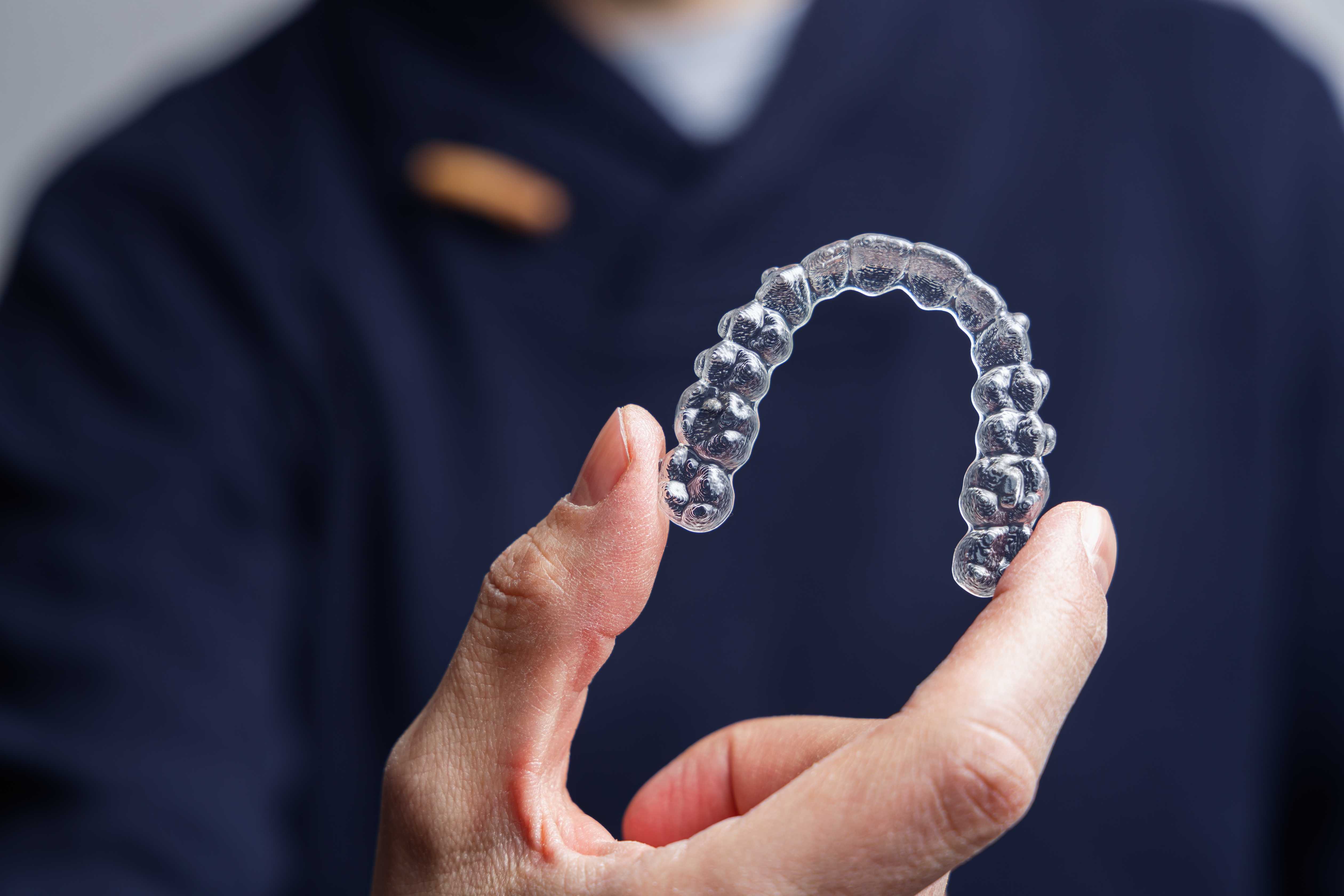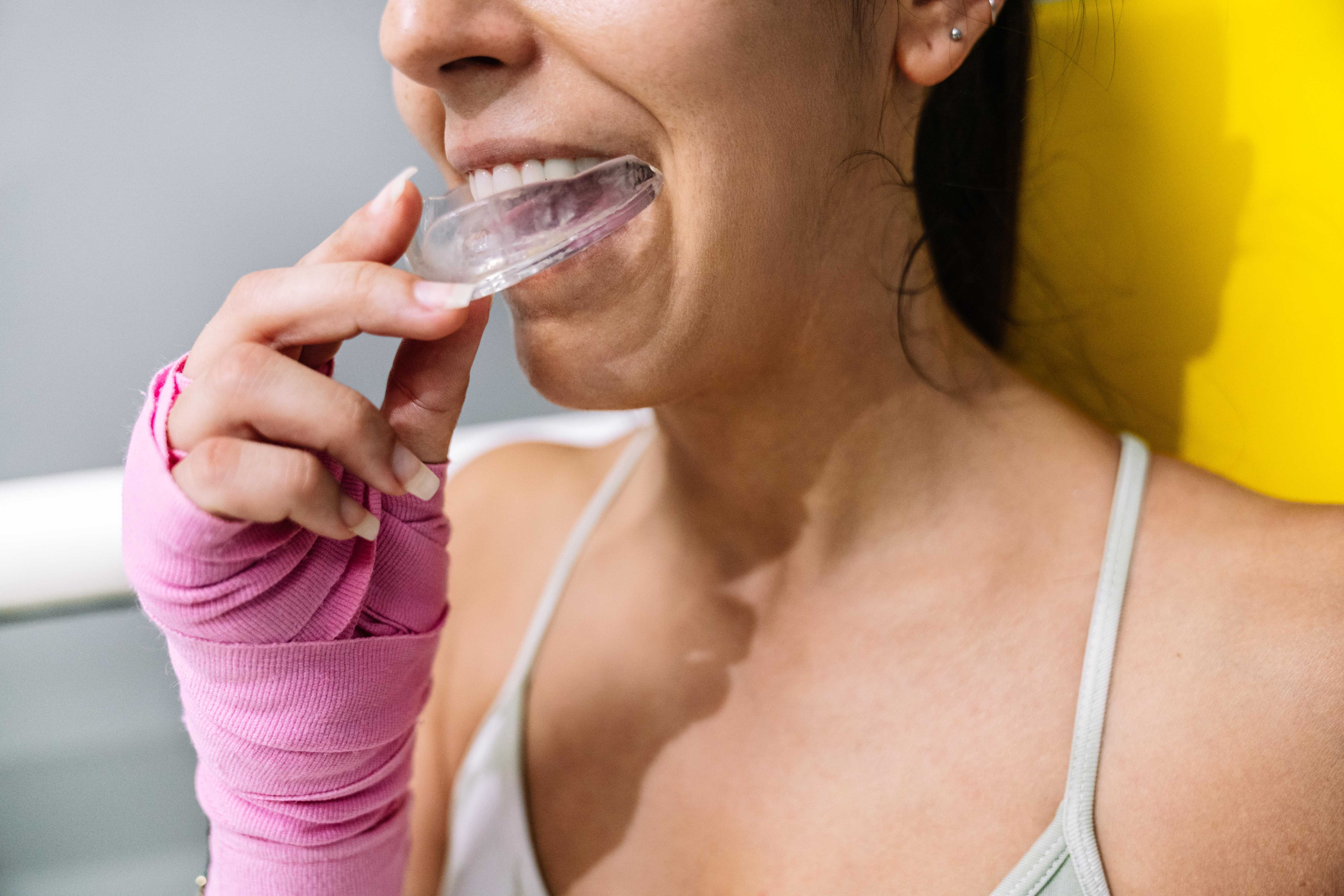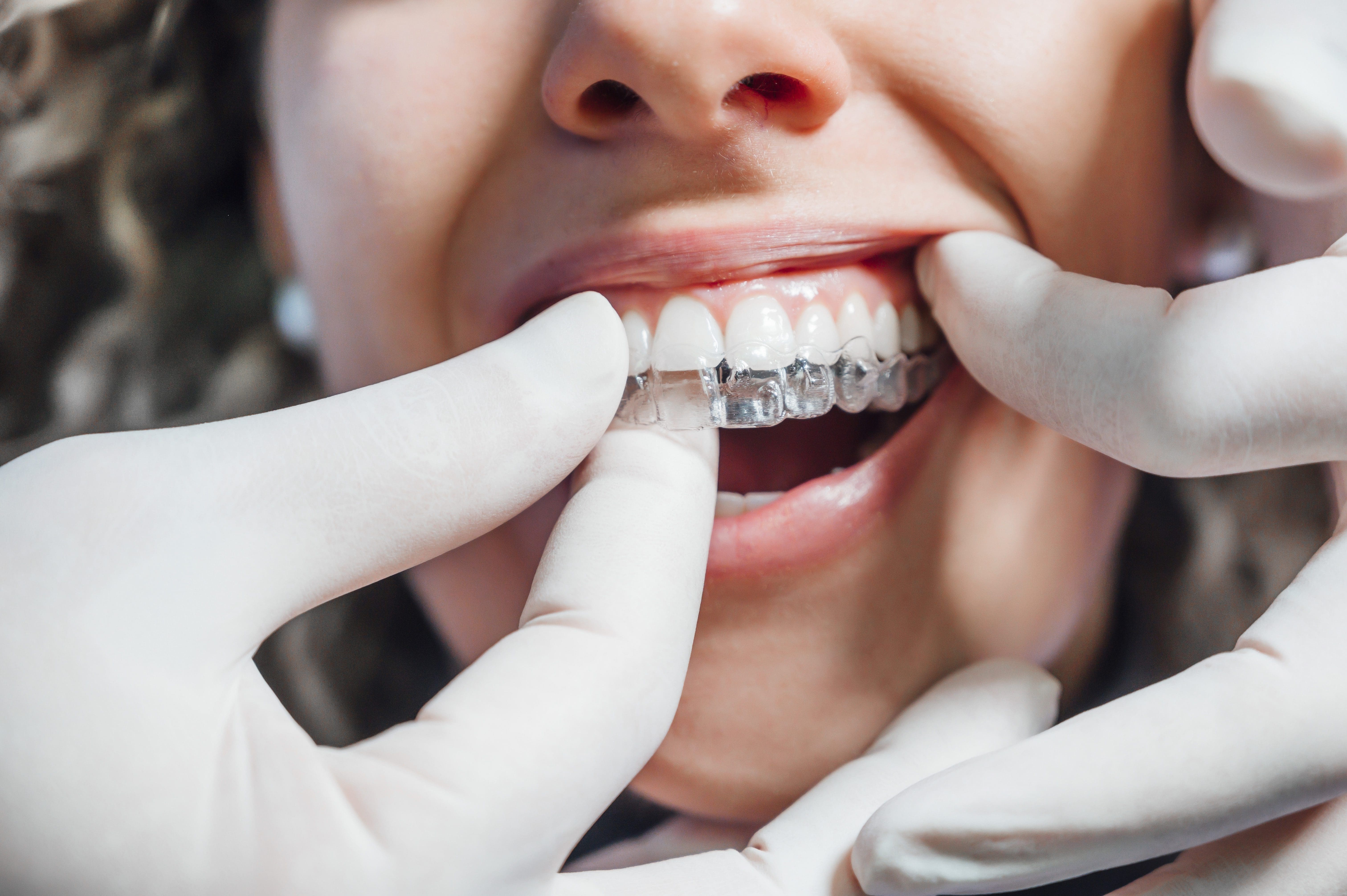Posted on December 27, 2024

Mouth guards and clear aligners serve different purposes, though both play a role in maintaining your oral health. Mouth guards are typically worn to protect against teeth grinding, whether at night or during physical activities like sports.
On the other hand, clear aligners are designed to straighten teeth, not to prevent grinding. Understanding the difference between the two can help you take better care of your teeth.
Keep reading to learn more about how you can protect your smile and achieve the results you’re looking for!
Clear aligners are a popular orthodontic option for straightening teeth and boosting confidence. These custom dental appliances are made from molds to gently shift teeth into their desired positions.
Unlike traditional braces, clear aligners are made of transparent plastic, making them almost invisible.
They are suitable for both adults and teens and offer a comfortable, discreet way to correct misaligned teeth over time. Their custom fit enhances comfort and improves dental care, making them an effective part of an overall orthodontic treatment plan.
Clear aligners are meant to gradually move the teeth to an ideal position and should be worn for 20 to 22 hours a day, including at night.
New sets will be given every 1 to 2 weeks to continue the process. They may feel uncomfortable initially, but your orthodontist’s guidance will help you adapt. You can take them out to eat and brush your teeth, which gives you flexibility throughout your orthodontic treatment.
Clear aligners can correct several orthodontic conditions, such as misaligned bites and orthodontic relapse after braces. They also promote better oral hygiene. They can also serve as a nightguard that one wears every day.
However, they must not be used instead of traditional mouthguards. One must clean their aligners every day with a retainer & mouthguard cleanser. It will kill 99.9% of odor-causing bacteria within three minutes.
 Mouthguards are custom-made dental appliances that protect your teeth and gums during sports and prevent teeth grinding at night.
Mouthguards are custom-made dental appliances that protect your teeth and gums during sports and prevent teeth grinding at night.
Made from soft, flexible materials, they offer comfort and protection.
Custom-fitted mouthguards provide a more precise fit, while over-the-counter options may vary in comfort and effectiveness.
Mouth guards protect your teeth during contact sports by absorbing impacts and preventing injuries.
They also reduce pressure from teeth grinding, preventing damage like chipping or cracking. Additionally, custom mouthguards can help relieve jaw pain caused by grinding or clenching, providing comfort for those with orthodontic issues.
Aligners and custom mouthguards are two different things in dentistry, though they may look the same.
Aligners are designed to shift teeth into their ideal alignment and should be worn all day, removed only for meals and hygiene.
In contrast, custom mouthguards protect teeth from damage during sports or nighttime grinding, but they do not facilitate movement.
These dental appliances can be used as needed and come in various materials, including hard, soft, or tailor-made options for specific activities like sports or bruxism.
Aligners are made from stiff thermoplastic that moves teeth effectively while remaining comfortable and durable. In contrast, mouthguards use softer rubber or silicone for protection.
The materials influence comfort, effectiveness, and appearance, so each tool serves its specific purpose. Good oral hygiene is important for aligners and mouthguards, and cleaners like Polident can help.
Feature Comparison:
 Aligners are designed to straighten teeth, not to protect against grinding or clenching. While they provide some light protection, they are not a substitute for a custom mouthguard and do not offer sufficient protection for your dental health.
Aligners are designed to straighten teeth, not to protect against grinding or clenching. While they provide some light protection, they are not a substitute for a custom mouthguard and do not offer sufficient protection for your dental health.
Aligners are primarily meant to align teeth, not protect them from grinding. Although their snug fit provides minimal protection, they are too thin to handle serious grinding.
For heavy grinders, dentists recommend thicker, custom night guards for better protection. You can still use aligners if you grind your teeth, but it’s important to understand their limitations.
Using aligners while grinding can negatively affect your dental health. Although they are made of durable plastic, constant grinding can reduce their effectiveness in realigning teeth.
They can also become distorted or cracked, impairing their fit and delaying orthodontic treatment.
Using aligners as night guards can damage them and disrupt your treatment. They are not designed for heavy grinding and may cause discomfort.
For maximum protection, it’s best to use a custom mouthguard designed specifically for grinding, as aligners are meant to preserve your smile, not replace proper dental protection.
Mouth guards protect teeth during sports or sleep, but they do not align teeth. Many people mistakenly believe that a custom mouthguard can straighten teeth, but it serves a different purpose than clear aligners.
Mouthguards can help with minor dental issues but cannot provide the specific movement needed for orthodontic treatment. They stay fixed to the teeth and do not apply the targeted pressure required for realigning teeth, which can interfere with a treatment plan.
Mouth guards are designed to absorb shock and protect teeth but do not offer the snug fit required for proper alignment.
Clear aligners, on the other hand, are custom-made to gradually shift teeth into their correct positions, addressing orthodontic issues more effectively.
Using a mouth guard as an alignment tool can lead to ineffective treatment and potential dental problems. It may delay proper orthodontic care, causing further misalignment or complications.
It’s important to use the right device for realigning teeth to avoid unnecessary risks.
Clear aligners and mouthguards have different purposes: clear aligners are designed to fix the inclination of your teeth, while the mouthguard is a protective gadget for your teeth.
It is indispensable to keep both for excellent dental care. Understanding the key differences between these dental appliances will improve your oral health.
Take control of your smile today! At Smilebliss, we provide expert teeth whitening and orthodontic treatments to help you achieve the smile you’ve always wanted.
Join the Smilebliss family and improve your dental health with our professional care. Book your consultation now and see how we can help you achieve a brighter, healthier smile!